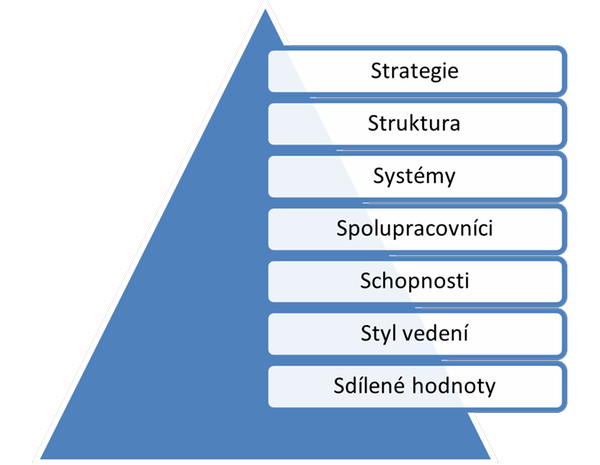We currently have 3 types of companies:
- Companies that are experiencing tumultuous growth in the current situation while facing a shortage of employees
- Companies facing a shortage of employees, orders remain the same
- Companies facing a shortage of orders, limited activity or having to temporarily suspend it
The fourth type could be a company that has not been affected by the current situation. However, I believe that there is no such thing at the moment. At least even companies that maintain a stable performance and have enough people must change their approach to employee safety, addressing the currently increased morbidity or demotivation of people caused by environmental influences.
What needs arise from the current situation for each type of company?
1. Stormy growth
Although this is a positive change in the market, the company is getting into crisis mode, there is a risk of inability to meet business obligations, high fluctuation and lack of capacity.
Part of the crisis mode is clearly a revision of the current 7S (source: McKinsey).
In the phase of “stormy growth”, it is necessary to create a new company strategy and ensure an understanding of the direction of each individual employee. Of course, this is closely related to unambiguous, comprehensible, open communication.
A change in the company’s strategy brings with it other key factors of change – a change in the organizational structure, a change in the style of management, internal systems, recruitment policy and a change in the development of key knowledge and skills.
Change in organizational structure
With a high increase in the number of employees, it is necessary to add another level of management and other specialized positions. This is also related to the change in management style, which requires the effective development of employees promoted to the role of a manager, or they have been added other duties. The success of change is built on the quality of their ability to lead, communicate, train people and improve.
Changing internal systems and leadership style
Fast and effective recruitment, use of modern methods of personnel marketing, including the search for new resources. A necessary condition is also the determination of the necessary number of employees, their structure and requirements for their competences. The significant increase in employees is also related to a change in the adaptation process (so-called onboarding), when fast, high-quality and effective training of new employees is crucial. In addition to the risk of poor quality, accidents and high turnover, the tumultuous increase in employees also carries the risk of overloading the internal system in the HR department and frustration of managers at a lower level of management. The ability to automate and digitize is now a very topical topic, and in the field of recruitment and adaptation, its return is immediate.
Another key internal system that needs to change is the reward and motivation system. A company growing needs to have the ability to flexibly respond to the needs of the company, to a change in strategy and current market events. Outdated and dysfunctional remuneration systems not only do not motivate employees to perform or work well, they also bring a huge burden on direct managers, hr departments and a large hit to the company’s budget with the increase in people.
2. Lack of people
A topical topic before the corona-crisis and today. By worsening the conditions for the so-called. foreign agency workers, the increase in demand for new people in companies in growth and the increased risk of illness / quarantine, the topic of recruitment has become the most frequently discussed by HR specialists.
Therefore, if we look at the 7S quoted above, it will also be valid in this case, only from a different point of view:
Change of strategy
In this case, it is necessary to change the recruitment strategy and the so-called recruitment strategy. Employer branding. Fast and effective recruitment, the use of modern methods of personnel marketing, including the search for new resources, automation of the recruitment and adaptation process are essential to ensure competitiveness on the labor market.
Change of internal systems
Personnel and process audit with the aim of streamlining processes, exclusion of all unnecessary activities, effective use of each employee, maximum use of competencies – change of tasks, job position. Standardization and continuous improvement is the key to successfully managing the current situation. This is also related to the analysis of the current system of remuneration and the revision of motivational tools.
Changing people’s leadership style and ability
In a situation where we have a shortage of people, it is important to involve all employees in meeting the goals. Effective management, agile approach, creation of so-called. microteams and their ability to effectively solve problems will bring a quick effect. Rethinking current competencies, expanding people’s abilities, increasing substitutability will bring stabilization and crisis management to society.
3. Stormy Slump
Companies that are facing a shortage of orders, have limited activity or have had to temporarily suspend it are in full crisis mode. The primary parameter is the so-called 5C crisis protection (source: Deloitte):
The first crucial step is to set up crisis management – i.e. the crisis management. management of finances, costs, customers and people. The intensity of managerial steps and decision-making increases. A crisis team is being set up, crisis communication is being set up.
Another important step is the review of the company’s strategy and the planning of various scenarios with the calculation of the impact on the economy. The ability to predict possible risks is absolutely crucial in this case.
The area of cost reduction and management is very often an uncontrolled activity. Costs are often reduced, which have a very low impact on the overall result and often a very negative impact on people’s performance. How to keep motivated employees in times of order downturn is a critical question for the management of all companies. Personnel and process audit with the aim of examining the company’s processes, excluding all unnecessary activities, determining the needs of the number of employees and their competencies in various scenarios is functional and contributes quickly to the management of the crisis situation.
This activity is closely related to a change in leadership style, a change in management’s approach to people, and very well-managed communication. Employee development taking into account the new process design (internal retraining) can be of greater benefit than mass layoffs. Search for non-traditional methods for savings, eg. the way of temporary assignment of employees to another employer can be an immediate and short-term solution.
Although it is possible to draw assistance from state support – antivirus – there is a long-term high risk that employees on obstacles of 60% – 80% will start looking for employment with a stable employer or in growth. However, managing and reducing staff costs is critical during this period. Analysis or change of the system of remuneration and motivation, analysis of benefits and their effectiveness, internal retraining and concurrence of activities can bring a significant result.
All three types of companies are going through a challenging period of crisis management and change, in addition, the increased frequency of forced work at home office, the restriction of social contacts and the increase in problems in people’s privacy bring frustration, demotivation and a negative atmosphere to society.






